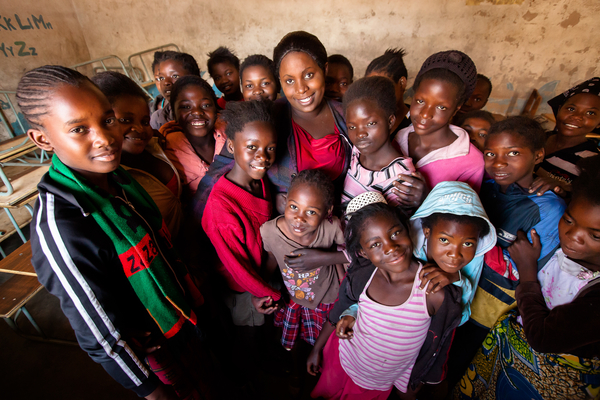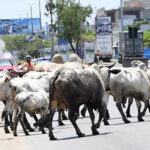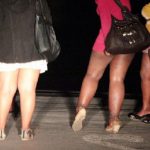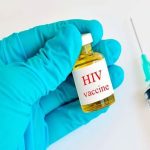Crossing Over To Accra (1)
- Home
- Crossing Over To Accra (1)

Crossing Over To Accra (1)

I have always given thanks to God for the decision I took early in 1960 to come to Accra for my secondary school education.
It was a personal decision.
When I was in form two (Middle School) at St. Pauls Catholic School at Amakom in Kumasi, I sat for the Common Entrance for the first time.
I chose Adisadel, Mfantsipim and St. Augustines, all Cape Coast schools, in that order because I believed Cape Coast was the cradle of education in Ghana and the place to be if one wanted the best.
Unfortunately, nobody from my class passed the common entrance that year. We were told later that none of us shaded his answers, which had been introduced that year, but we were not taught by our teachers.
In those days one could only choose government assisted schools like the three Cape Coast schools I chose in form Two or below.
Once we got to form three we were advised to choose from the list of government encouraged schools that included West Africa Secondary School (WASS), Ebenezer, Labone, O’Reilly and Thomas Aquinas, all in Accra.
Interest
However, by the time I got to form three in January 1960, my interest had shifted from Cape Coast to Accra, for two main reasons.
As I have usually mentioned in these columns, throughout my Middle School days (1958 – 1960) I combined going to school with selling newspapers.
I did this till a week before I finally left for secondary school in September 1960, the year the academic year was changed from January to December, to September to July.
During weekends and holidays my favourite spot to sell newspapers was the Kumasi Railway Station.
I used to enjoy watching students returning to school after holidays.
I watched them as they cracked jokes, patted each other at the back when they arrived at the railway station and played cards as the train moved from the station.
That was the time I started thinking of going to secondary school in Accra with the opportunity to travel by train.
That scene at the railway station was different from the nearby Cape Coast lorry station near Dunkirk, when students returning to school in Cape Coast were crammed into wooden mammy wagons, also known as bone – shakers, with little space to interact during the long journey to Cape Coast.
My other reason was that from 1958 I had started reading newspaper because I was a vendor.
I used to go through the pages of the newspapers. I understood all that I was reading.
Ghana had become independent on March 6, 1957 and from 1958 I followed all that was happening in Accra, all the political developments, with Dr Kwame Nkrumah at the helm of affairs.
The conference of the heads of independent Africa states in 1958, followed by the All – Africa People Conference (for Freedom Fighters from countries still under colonial rule) had turned Accra into a Mecca of a sort for all Africans and blacks of African descent from elsewhere.
I was thrilled by all that was happening in Accra, with all the important leaders on our continent always there for one meeting or the other or just to come and consult with Dr. Nkrumah, our Prime Minister.
It was all that I was reading about Accra in these early days of independence that influenced my decision to come to Accra for my secondary education.
Thus for the common entrance in 1960 I chose WASS, an encouraged school, because I had seen the picture of some students from that school in the Junior Graphic. My father did not have a hand in this.
Neither did my teachers. I was determined to go to secondary school in September 1960 before I got to Middle School Form Four.
It was only my headteacher, the late Mr John Arthur, later to become Head of Catholic Educational Unit in Ashanti, who wanted me to choose Opoku Ware, a Catholic school in Kumasi.
I told him it was an assisted school and I did not want to miss out because I was already in form three and not eligible to choose a government assisted school.
Sometime in July 1960 I got a letter from WASS in Accra inviting me for an interview at the school early in August 1960. I showed the letter to my headteacher and class teacher who were happy.
They congratulated me. When I got home I showed the letter to my father who was also happy.
What I was not sure of was whether my father would allow me to travel to Accra since I had never travelled alone.
All my travels were within Ashanti on excursions, mainly return journeys.
It was only during my primary school days at Salvation Army in 1956 and 1957 that we went for singing competitions at Wiamoase and Dampong both in Ashanti and spent two nights.
In July 1960 I was only a little over 15 years old. When I showed the letter inviting me to an interview to my father, he did not tell me he would not allow me to travel to Accra alone for the interview. He only congratulated me.
I was, therefore, pleasantly surprised when I returned from school one Thursday in August, two days to the interview, and I saw a new travelling bag in our room containing a few items for my journey to Accra.
My father told me to get ready for the trip to Accra that evening. I washed down and he took me to an Accra station at Aboabo station, about a kilometer from home.
The old man discussed with the driver and told him to take good care of me and drop me at the nearest point to Accra New Town, or Lagos Town, as it was then called, where WASS was located.
Wonderful experience
It was a wonderful experience to travel alone to Accra. By the time we got to Accra it was already dark, probably around 9:00p.m.
The only thing I remember was going round the Kwame Nkrumah Circle, with the fountain working, water everywhere. It was a beautiful scene.
After discharging the passengers, we headed back to Nsawam. I was alone with the driver and the mate.
I got to know that it was an Nsawam bus with the owner based in that town. They would only go to Accra to load to Kumasi.
After the return journey they would go and park at Nsawam.
I remember sleeping in the bus with the mate. In the morning, he woke me up and showed me where to have my bath. At 7a.m., news came in that one of their buses had an accident in the course of the night.
As a result, the bus could not take me to Accra. But the driver took me to the Accra station and handed me over to another driver, charging him to drop me off at Caprice.
He gave me the directions to Lagos Town from where I could be directed to “College”, the name by which WASS was known then.
Till today, the bus stop at WASS, even though the school has relocated to Adentan, is still called College Bus Stop.
I got down at Caprice and my new driver directed me to go up the road till I got to the Rialto Cinema.
He told me to ask for College from that point. As I walked up I was thrilled to find St. Pauls Catholic Church, Kpehe, only about 150 metres from the junction.
As I have already mentioned, my middle school in Kumasi was also called St. Pauls and was also a Catholic School.
For one reason or the other, I still ply that route, more than 50 years since I first passed through. Anytime I pass through Kpehe, I remember my first time and also remember my old middle school at Amakom.
It didn’t take me long to locate WASS. I met Mr Philip Evans, the housemaster, who held that position throughout my five year stay at the school.
Mr Evans was the only resident tutor who instilled discipline in all of us.
When I told him I had come for the interview scheduled for the following day, he gave me a place to sleep in House Three, which was also his residence.
As soon as I was shown my sleeping place, I came out and left straight for town.
I was able to locate the offices of Graphic and went to meet the editor of Junior Graphic, Ama Serwah.
After the interview on Saturday, I left for James Town to see the Light House and to see the sea for the first time.
In fact, I was all over the place and at one time walked from the Post Office in Accra through Nkrumah Avenue to Circle and then to Lagos Town.
It was not until Monday that I returned to Kumasi.
Source: graphic.com.gh
- Share
Classic Ghana
Classic Ghana brings you into a fun world of arts, entertainment, fashion, beauty, photography, culture and all things in between. Let’s explore these together!







